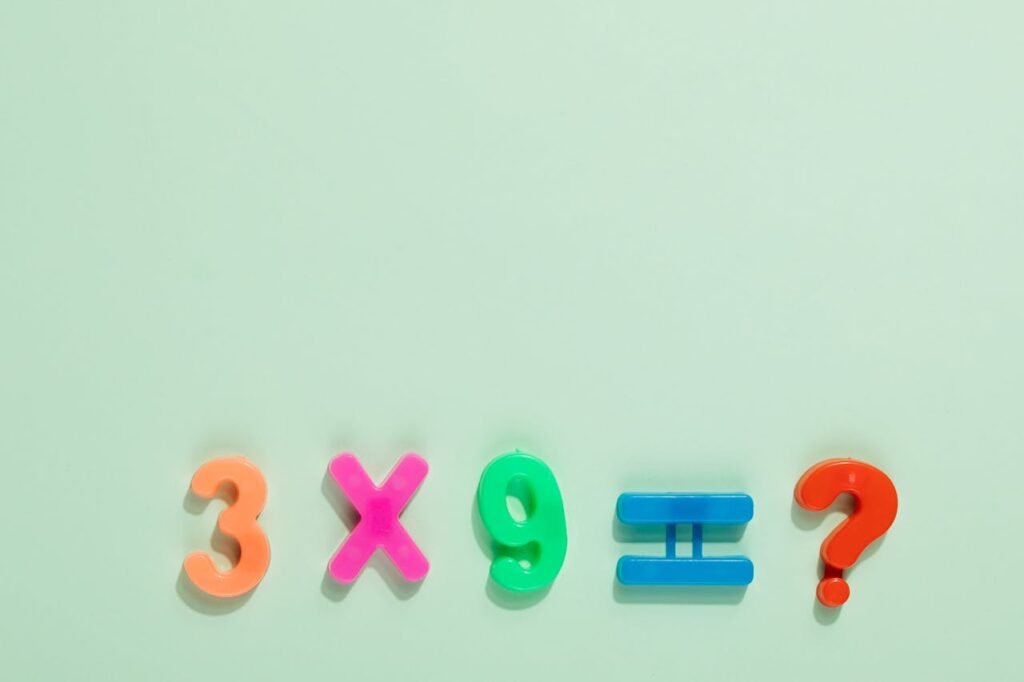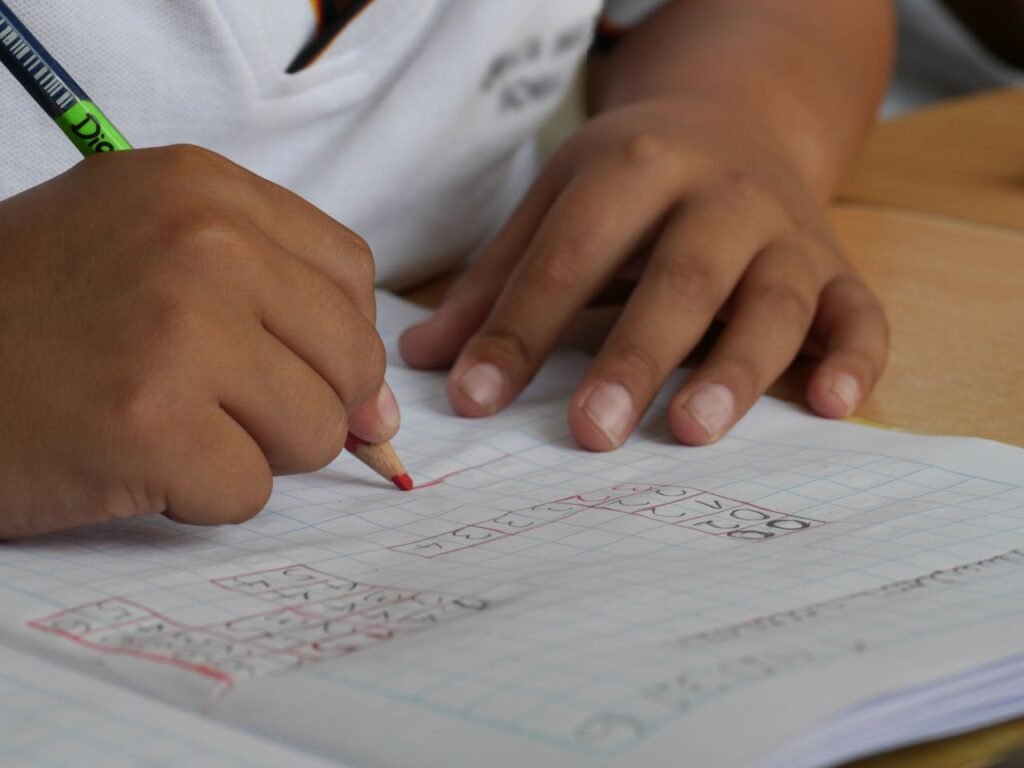For years, parents have been searching for a way to make math click for their children. Not just to pass tests, but to truly understand it—to see how numbers work, to solve problems without fear, and to even enjoy the process.
In many countries, one approach has been making waves: Singapore Math. It’s a way of teaching math that’s praised for turning confused students into confident problem-solvers. Parents love it because it focuses less on rote memorization and more on real understanding.
Instead of rushing through topics, Singapore Math takes things step-by-step, helping children master each skill before moving on. And it uses clever visual methods to make even tricky problems feel simpler.
The Origin and Philosophy of Singapore Math
Singapore Math isn’t just a catchy name—it’s a proven approach that comes from the way mathematics has been taught in Singapore’s schools since the 1980s. Before that time, Singapore’s education system wasn’t particularly famous for math excellence. But when the Ministry of Education reviewed how math was being taught, they decided to completely redesign the curriculum.
The new goal was simple but powerful:
- Focus on mastery, not memorization.
- Build deep understanding before moving to the next concept.
- Use visual and logical thinking so every child, regardless of natural ability, could grasp the ideas.
This change worked. Within a decade, Singapore’s students started topping international math rankings like TIMSS (Trends in International Mathematics and Science Study) and PISA (Programme for International Student Assessment). And it wasn’t just the top students—average scores across the country improved dramatically.
Soon, other countries started paying attention. Publishers began adapting Singapore’s teaching methods into books and resources for schools worldwide, and “Singapore Math” became a recognized brand for effective math education.
The Philosophy That Drives It
The core philosophy behind Singapore Math is different from what many children experience in traditional classrooms. It’s built on three big ideas:
1. Understanding Comes Before Speed
In many systems, children are pushed to learn fast—covering multiple topics quickly and moving on, even if they haven’t fully understood the last one. Singapore Math flips this idea. Teachers slow down to ensure every child has truly grasped a concept before they introduce something harder.
Example:
Instead of teaching multiplication facts as pure memorization, the teacher makes sure children deeply understand what multiplication means—showing them groups of objects, letting them draw it, and helping them see patterns. Speed comes later, once the concept is solid.
Benefit:
- Reduces gaps in learning that can cause bigger struggles later.
- Builds a strong foundation for higher-level math.
2. Concrete to Pictorial to Abstract (CPA)
This is the signature approach of Singapore Math. Students first learn new concepts using concrete objects (like blocks, counters, or beads), then move to pictorial representations (drawings and diagrams), and finally to abstract symbols (numbers and equations).
Example:
To teach fractions, a child might first cut a real apple into equal parts (concrete), then draw a picture of it (pictorial), and finally write the fraction ½ or ¼ (abstract).
Benefit:
- Makes learning hands-on and visual, so children really “see” the math happening.
- Helps all types of learners, including visual and kinesthetic learners.
3. Depth Over Breadth
Instead of trying to cover as many topics as possible in one year, Singapore Math focuses on fewer topics but teaches them in much greater depth. This means children spend more time exploring, questioning, and mastering each skill.
Example:
In a traditional curriculum, children might touch on fractions briefly in one grade and revisit it later. In Singapore Math, they might spend several weeks on fractions in one go—covering everything from the basics to more complex fraction operations before moving on.
Benefit:
- Prevents “half-learning” where a child understands only part of a concept.
- Gives students the time and practice needed to feel confident.
How Singapore Math Works in the Classroom

Singapore Math isn’t just a set of books—it’s a teaching method. It changes how lessons are delivered, how students interact with math, and how teachers check for understanding.
The method is carefully designed to help children move from curiosity to mastery in a smooth, natural way. Here’s how it typically works in practice.
1. Starting with Real-Life Contexts
Every lesson often begins with a situation children can relate to—a story, a question, or a real-world scenario. Instead of jumping straight into numbers, the teacher presents the problem in a way that sparks interest.
Example:
Instead of saying, “We’re going to learn subtraction,” the teacher might say, “You have 5 toy cars, and your friend borrows 2. How many are left?” This makes the math feel useful, not abstract.
Why it works:
- Helps children see math as part of their everyday life.
- Builds motivation because they can connect the lesson to things they care about.
2. Using the CPA Approach in Every Lesson
As we discussed in Section 1, the Concrete–Pictorial–Abstract (CPA) approach is the heart of Singapore Math. But what’s special is that it’s not just used for the first few lessons—it’s embedded in nearly every topic.
Example:
When learning multiplication, students might:
- Start with actual counters or blocks (Concrete).
- Draw a “bar model” or diagram showing groups (Pictorial).
- Finally, write equations like 3 × 4 = 12 (Abstract).
Why it works:
- Gives multiple entry points for understanding.
- Bridges the gap between “seeing” math and “symbolizing” it.
3. Bar Modelling for Problem Solving
One of the most famous tools in Singapore Math is the bar model—a simple drawing method where quantities are represented as rectangular bars. This visual method helps students solve word problems that would otherwise seem complex.
Example:
If a problem says:
Sam has 12 marbles. Tom has 8 marbles fewer than Sam. How many marbles does Tom have?
Students draw a bar for Sam’s 12 marbles, then a shorter bar for Tom, showing the difference. From there, the answer is obvious: Tom has 4 marbles.
Why it works:
- Translates tricky word problems into clear visual diagrams.
- Works for all ages—from primary school addition to high school algebra.
4. Focused Practice and Mastery
Instead of rushing to cover more topics, lessons stick with one concept until mastery is achieved. Students work through varied problems—from simple to challenging—so they can apply the same concept in different ways.
Example:
In a week on fractions, students might first learn to recognize fractions, then compare them, then add them, and finally solve real-world fraction problems.
Why it works:
- Ensures concepts are understood deeply, not just memorized for a test.
- Builds confidence because students don’t feel “left behind.”
5. Encouraging Discussion and Thinking Aloud
Singapore Math classrooms often sound different from traditional ones—students talk a lot. They explain how they got their answers, listen to different methods, and compare strategies.
Example:
Two students might solve the same problem differently—one using a bar model, another using mental math. The class discusses both, learning multiple ways to think about the problem.
Why it works:
- Teaches children to articulate their reasoning.
- Helps them learn from peers, not just the teacher.
Why Parents Love Singapore Math

When parents talk about Singapore Math, you’ll often hear words like clarity, confidence, and results. It’s not just that their children are doing better in math—it’s that they’re thinking differently about numbers. Here’s why so many parents rave about it.
1. Children Truly Understand What They’re Doing
In many traditional math programs, students learn “rules” first—like “borrow in subtraction” or “carry in addition”—without really knowing why those rules work. Singapore Math flips this around, making sure children see why the math works before asking them to memorize steps.
Example:
A child learning subtraction won’t just cross out numbers in a column. They’ll use counters, pictures, and number bonds to see that 52 – 28 means breaking apart tens and ones.
Parent’s perspective:
“When my child explains their thinking to me, I realize they actually get it—they’re not just guessing the steps.”
2. Kids Become Better Problem-Solvers
Singapore Math puts a lot of emphasis on problem-solving, not just basic calculations. With tools like bar models and visual reasoning, children can tackle word problems that would be too hard with numbers alone.
Example:
If a question involves multiple steps—like figuring out how much money is left after several purchases—the child can draw it out, understand the sequence, and then solve it.
Parent’s perspective:
“My daughter used to freeze when she saw a long word problem. Now she calmly draws a bar model and works it out step-by-step.”
3. Builds Confidence That Lasts
Because lessons move slowly and focus on mastery, children aren’t left behind. Even struggling learners get the time and support they need before moving on, which keeps their confidence intact.
Example:
A child who once dreaded multiplication tables now enjoys finding patterns and showing different ways to solve a problem.
Parent’s perspective:
“My son used to say he was bad at math. Now he says, ‘I just need to figure it out another way.’ That’s a huge change.”
4. Works for All Kinds of Learners
The Concrete–Pictorial–Abstract method means Singapore Math isn’t just for children who “get numbers” quickly. Visual learners, hands-on learners, and even those who struggle with traditional methods often find success here.
Example:
A visual learner might use colorful fraction bars to compare ¾ and ⅔ before moving to written symbols.
Parent’s perspective:
“My child finally found a way of learning that makes sense to her. She’s not just memorizing—she’s understanding.”
5. It Sticks for the Long Term
Because Singapore Math focuses on deep understanding, children remember what they learn far longer. They don’t just cram for a test and forget—it becomes part of how they think.
Example:
A child who learned place value deeply in early grades can later handle decimals and percentages with ease.
Parent’s perspective:
“I’m amazed that my child remembers things they learned last year and can still use them without reviewing.”
How Singapore Math Compares to Traditional Math

At first glance, Singapore Math and traditional math may seem similar—they both cover addition, subtraction, multiplication, division, fractions, geometry, and so on. But the way these topics are taught is where the real difference lies. Think of it like learning to cook: one method gives you a recipe to follow without question, the other teaches you how the ingredients work so you can create your own dishes later.
1. Depth vs. Speed
Traditional Math:
Moves quickly through many topics in a year. For example, fractions might be introduced briefly in one grade, then revisited in more detail later. The focus is often on exposure rather than mastery.
Singapore Math:
Stays with one topic longer, covering it in great depth. Fractions might be explored over several weeks—starting with simple ideas and moving to complex operations—before moving on.
Impact on Students:
Singapore Math students leave each topic with a solid foundation. Traditional math students may have gaps that appear later when harder concepts build on the basics they didn’t fully master.
2. Understanding vs. Memorization
Traditional Math:
Often teaches rules and procedures first (“borrow when subtracting,” “multiply before adding”) and expects students to remember them.
Singapore Math:
Teaches why the rules work first, using visual models and real-life examples, and only then moves to symbolic rules.
Impact on Students:
Singapore Math builds flexible thinkers who can solve unfamiliar problems. Traditional math can produce students who are fast with familiar problems but get stuck with anything outside the exact format they’ve learned.
3. Visual Tools vs. Pure Symbols
Traditional Math:
Relies heavily on abstract symbols (numbers, equations) from the start.
Singapore Math:
Moves from concrete objects to pictorial models (like bar diagrams) before introducing pure symbols.
Impact on Students:
Visual learners thrive in Singapore Math because they see what’s happening before dealing with abstract notation. Traditional math can feel too abstract too soon, leaving some students lost.
4. Problem-Solving vs. Repetition
Traditional Math:
Practice often focuses on doing many similar problems to reinforce a skill.
Singapore Math:
Practice mixes different kinds of problems, including multi-step and non-routine ones, to encourage reasoning and adaptability.
Impact on Students:
Singapore Math students learn to apply their skills in flexible ways. Traditional math students may excel at drills but struggle when a problem is unfamiliar.
5. Pace and Support
Traditional Math:
Keeps the whole class moving at the same pace, which can leave some behind and leave others bored.
Singapore Math:
Allows more time on each topic, so struggling students can catch up and stronger students can go deeper.
Impact on Students:
Confidence is often higher in Singapore Math classes because students aren’t rushed past topics before they’re ready.
How Parents Can Support Singapore Math Learning at Home

One of the reasons Singapore Math works so well is that it encourages children to explore and talk about their thinking. Parents can extend this learning at home, even without being math experts themselves. The goal isn’t to “teach” like a classroom teacher, but to create the right environment and habits.
Here’s how.
1. Ask “How Did You Get That?” Instead of “What’s the Answer?”
Singapore Math values the process as much as the final answer. When your child solves a problem, ask them to explain their steps.
Example:
Instead of saying, “What’s 48 + 37?” and stopping at the answer, you might say, “Interesting—how did you get that?”
Why it works:
- Encourages your child to verbalize their reasoning.
- Helps them catch their own mistakes.
- Reinforces confidence in explaining ideas clearly.
2. Use Everyday Objects for Practice
Since Singapore Math starts with concrete objects, you can use things around the house for practice—coins, snacks, toys, or even groceries.
Example:
If you’re cooking, ask, “We need ¾ cup of sugar, but the measuring cup shows only ¼—how many scoops should we add?”
Why it works:
- Shows that math is useful in real life.
- Makes learning hands-on and fun.
3. Let Your Child Draw It Out
When a problem feels tricky, encourage your child to make a diagram—especially a bar model—to break it down. You don’t have to know exactly how the model should look; the act of drawing will help them think.
Example:
For “Amy has 20 sweets, Ben has 5 fewer,” they could draw two bars, one shorter by 5.
Why it works:
- Turns an abstract problem into something visual and manageable.
- Helps them follow the CPA (Concrete–Pictorial–Abstract) approach.
4. Play “What If” Games
To build flexible thinking, try changing the numbers in a problem and asking, “What if…?”
Example:
If you’re solving “Jack has 8 apples, and eats 3,” follow up with, “What if Jack had 12 apples? What if he ate half instead?”
Why it works:
- Encourages exploration instead of rote memorization.
- Strengthens problem-solving skills by changing the conditions.
5. Celebrate the Thinking, Not Just the Score
If your child brings home a math test, praise the strategies they used, not just the grade.
Example:
“You explained your fraction problem so clearly—I can see you really understand it!” is more encouraging than just “Good job getting 9 out of 10.”
Why it works:
- Builds a growth mindset.
- Helps your child see value in learning, not just in marks.
How Debsie Uses Singapore Math to Transform Learning for Kids Worldwide

At Debsie, we believe math should feel natural, logical, and even enjoyable. That’s why our partner teachers use the core ideas of Singapore Math—not just in math-only lessons, but woven into our broader teaching approach.
Here’s how we bring the method to life online, for students aged 5 to 18 across the globe.
1. Expert Teachers Who Understand the Philosophy
Our math teachers aren’t just skilled at solving problems—they’re trained to teach for understanding. They know when to slow down, when to introduce a visual, and when a child is ready to move to abstract work.
Example:
If a child is learning division for the first time, our teacher won’t rush to long division steps. They’ll first show equal-sharing with counters, then draw it, and finally move to written notation—exactly as Singapore Math recommends.
Benefit:
- Every child learns at their own pace, but with a clear, structured progression.
2. Fully Interactive Lessons
Debsie classes aren’t passive. Students draw, explain, and interact with teachers in real-time. This mirrors the “discussion-rich” environment of Singapore Math classrooms.
Example:
During a word problem, the teacher might ask each child to create a bar model on their screen, then share and explain it to the group.
Benefit:
- Builds confidence in explaining thinking.
- Encourages collaborative problem-solving skills.
3. Blending the CPA Approach with Digital Tools
We use the Concrete–Pictorial–Abstract method even in online settings. For concrete learning, we send digital or printable manipulatives. For pictorial learning, our interactive whiteboard lets children draw diagrams and bar models with ease.
Example:
If a lesson is about fractions, students might first move virtual fraction blocks on screen, then draw a model, and finally solve the abstract equation.
Benefit:
- Keeps learning hands-on and engaging, even remotely.
4. Personalized Practice Paths
Not every child needs the same amount of time on each topic. Our platform tracks progress and suggests more practice where it’s needed—whether that’s extra bar model problems, more concrete activities, or challenging multi-step problems.
Example:
If a child shows speed but makes small mistakes in multi-step problems, we focus on building accuracy without slowing their natural pace.
Benefit:
- Avoids “one-size-fits-all” teaching.
- Lets each child master topics before moving forward.
5. Real-World Application Challenges
We go beyond textbook-style practice by giving students real-world challenges that use Singapore Math skills.
Example:
A “market day” activity might ask students to calculate change, compare prices, and find the best deals—all using the same visual and logical reasoning techniques.
Benefit:
- Shows how math skills are practical and useful.
- Makes lessons exciting and memorable.
Conclusion — Why Parents Everywhere Are Choosing Singapore Math
Singapore Math is more than just another way to teach numbers—it’s a way to teach children how to think. It slows down enough for real understanding, builds strong visual and logical reasoning skills, and creates confident problem-solvers who aren’t afraid of new challenges.
Parents rave about it because the changes are visible. Children who once guessed at answers begin explaining their reasoning with pride. Kids who feared math start to see it as a puzzle they can solve. And those who were already strong in math find themselves pushed to think deeper, not just faster.
At Debsie, we’ve seen these transformations happen again and again. Our expert teachers bring Singapore Math’s principles into interactive online lessons, making it accessible to children aged 5–18 anywhere in the world. We combine hands-on learning, visual tools, and real-world challenges so students don’t just learn math—they own it.
📌 Here’s the truth: When a child has a strong foundation and a love for learning, their potential is limitless.
👉 Give your child that advantage. Book a free trial class today at https://debsie.com/courses/ and see how Singapore Math—and Debsie’s approach—can change the way your child sees math forever.
Read next:



